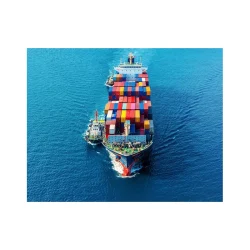Advantages of short sea shipping for the container shipping industry
2024-03-22
Short sea shipping, also known as coastal shipping or feeder shipping, refers to the transportation of goods by sea along coastlines, between neighboring countries, or within a region. Here are some advantages of short sea shipping for the container shipping industry:
1. Cost-Effectiveness: Short sea shipping can be more cost-effective than other modes of transportation, such as road or rail, especially for relatively short distances. It can help reduce transportation costs for shippers, as well as congestion and maintenance costs associated with inland transportation infrastructure.
2. Reduced Congestion: Short sea shipping can help alleviate congestion on roads and railways by diverting freight traffic to waterways. This can lead to smoother traffic flow and reduced environmental impacts from road congestion, such as air pollution and greenhouse gas emissions.
3. Environmental Benefits: Shipping by sea is generally more fuel-efficient and environmentally friendly compared to road or air transportation. Short sea shipping can help reduce carbon emissions, as well as other pollutants associated with road transportation, contributing to environmental sustainability and compliance with emission regulations.
4. Reliability and Predictability: Coastal shipping routes are less susceptible to traffic congestion, accidents, or weather-related disruptions compared to road or rail transportation. This can result in more reliable and predictable transit times for shippers, reducing the risk of delays and improving supply chain efficiency.
5. Flexibility and Accessibility: Short sea shipping provides access to coastal regions, islands, and ports that may be inaccessible or less accessible by road or rail. This can expand market reach for businesses, facilitate trade, and support economic development in coastal communities.
6. Intermodal Connectivity: Short sea shipping can complement other modes of transportation, such as rail and trucking, as part of an integrated intermodal transportation network. Containers can be easily transferred between ships, trucks, and trains, providing seamless door-to-door transportation solutions for shippers.
7. Capacity Utilization: Short sea shipping can help optimize capacity utilization in the container shipping industry by filling gaps in trade routes or utilizing excess capacity on larger vessels. It can also support feeder services to major container ports, facilitating the movement of containers to and from smaller ports and terminals.
8. Regulatory Support: Government policies and incentives aimed at promoting sustainable transportation and reducing road congestion may support the development of short sea shipping initiatives. This can include financial incentives, infrastructure investments, and regulatory measures to encourage modal shift towards maritime transport.
Overall, short sea shipping offers numerous advantages for the container shipping industry, including cost-effectiveness, environmental sustainability, reliability, flexibility, and intermodal connectivity. By leveraging coastal waterways and maritime routes, short sea shipping can play a vital role in enhancing the efficiency and sustainability of global supply chains.



